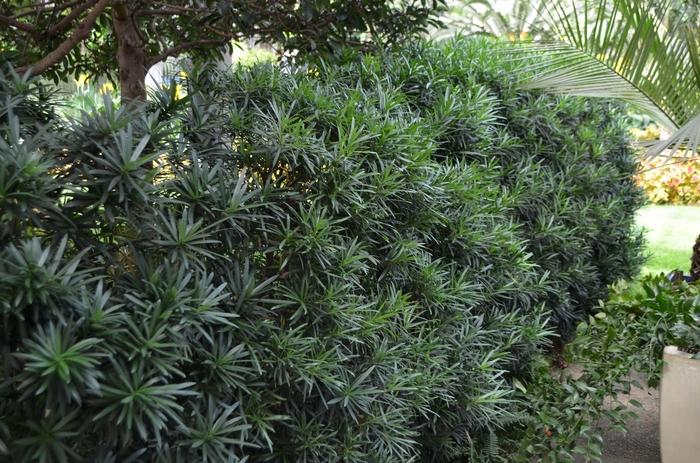Podocarpus macrophyllus 'Maki'
Shrubby Yew

Description
A medium-sized variety of Yew Podocarpus that will accommodate smaller spaces, more ideal for foundation plantings. Slower growing than others with dense upright branching on a pyramidal form, heavily covered by small, dark green, needle-like foliage. A wonderful, slow-growing, low maintenance hedge or screen plant. Evergreen. Narrow form means this plant works well in narrow city side yards. Also works well along backyard fence lines to block undesirable views. Small enough for courtyards and walled gardens, use as a corner element or treat as a semi-formal green column. Very adaptable to contemporary or Asian-inspired themes. A lifesaver on deep, narrow lots and as a columnar divider to separate multistory homes. Grow this tree with other plants that offer similar easy care requirements. Provide enriched, slightly acidic, well-drained soil. Water deeply and regularly during the first few growing seasons to establish an extensive root system. Once established, reduce frequency; prefers regular water but tolerates some drought. Feed in early spring before new growth emerges. Prune annually to shape. Reaches 8-10' tall and 3-4' wide in 10 years. Does best in full or partial sun. Tolerant of coastal conditions and deer resistant.
Plant Type
Shrub
Height Range
6-12'
Width Range
Flower Color
n/a
Flower Season
n/a
Leaf Color
Dark Green
Bark Color
n/a
Fruit Color
n/a
Fruit Season
n/a
Sun
Full, Half
Water
Medium
Growth Rate
Slow
Soil Type
Loam
Soil Condition
Rich, Well-drained, Moist
Soil pH
Acid
Adverse Factors
n/a
Design Styles
English Cottage, Formal, Japanese, Seascape
Accenting Features
Espalier, Unusual Foliage
Seasonal Interest
Winter, Spring, Summer, Fall
Location Uses
Entry, Foundation, Patio, Raised Planter, Swimming Pool, Walls / Fences
Special Uses
Container, Filler, Hedge, Screen
Attracts Wildlife
n/a
Water Saving Tip:
Change spray sprinklers to low-flow bubbler or drip systems.
Shrubs and trees are ideal candidates for this type of irrigation because the water is applied directly to the root zones.